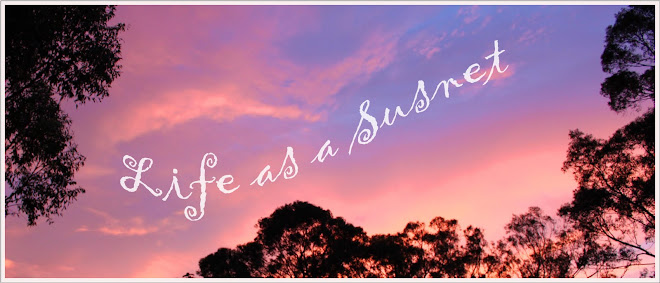-----------------------------------------------------------------------------------------------------------------------------------
Posted 21/05/2010
CSU
Student number: 11410571
The following are attempts at a range of visual art mediums, including photography, drawing, painting, digital art and sculpture. These works are my own and attempt at developing different artistic skills that are set out in the NSW K-6 Creative arts Syllabus (2006).
(Click to enlarge images)
Board of Studies, (2006) NSW K-6 Creative arts Syllabus, Australia: Board of Studies
Photography:
These three shots focus on perspective. The first is an upward shot St. Mary's Cathedral, the effect this angle has is to emphasise the size and grandeur of the building. The next shot is of my niece looking up. I was standing on the garden wall to take the picture, it produced the effect of putting her out of proportion and creating focus on her face. This sort of shot creates an overpowering effect. The last shot is of a pair of shoes, the point of this shot was to see an object from a perspective that it would not normally be seen from by the human eye. Getting down low to the ground to take the shot put a new perspective on the inanimate object.
Photography can be integrated into the creative arts strand to develop students eye for composition, line, perspective and much more.
Drawing:
This image is an attempt of a drawing from a movie title. I must say my drawing skills have decreased from lack of practice over the years, but my attempt was to achieve shading through line, and composition. I have a great tendency for not getting proportion correct, no matter what strategy I use. For this image I used lines on the actual image to get the angle of the eyeline, bridge of the nose and then expanded it from there.
Strategies such as that can be used for beginning drawers that find it difficult to know where to start from, or how to get the image in proportion. It can involve learning any amount of skills that are included in the curriculum such as sketching, shading, perspective, line, contrast, composition, proportion and much more.
Painting:
For painting I wanted to do something that could incorporate colour, shape, space, line and composition. I decided to work with circles of varying sizes, I overlapped them, this created spaces within each overlap. I used a compass to draw the various sized circles. Then with a range of colours painted in each open space created. It was difficult to use a set amount of colours to fill in each space without them being next to each other. It started to feel like a colouring in version of Sudoku!
This sort of activity could be incorporated into maths activities within a unit about shapes. If the rules were to use a set amount of colours, how much could they fill it in before two adjacent spaces would have to be the same colour? I didn't realise that it actually required some logical thinking, I knew I wanted the colours to be random and not touching, but had not thought it would be difficult until I got half way through it!
Digital Art:
Digital at provides such a range of possibilities and it can be open for all ages and abilities. Simple editing skills can be taught to children that will allow them to create a variety of expressive pieces for different purposes and contexts.With this image I used Photoshop Elements 7.0 a photo editing program. Some of the tools I used to create this included, Layering, Opacity, Brush, Paste, Copy, Gradient, Contrast, Brightness and Stretch .The theme I wanted to go for was 'nightmare', I had to reflect on what elements create a dark and gloomy atmosphere as well as an image that would be 'scary'. The current vampire craze was an instant idea. The image is of me, that I spliced in half and copied then flipped the image. This distorted the image somewhat, I then added fangs with the blurring tool. The clouds and trees gave it a Bram Stoker's "Dracula" look to it, reminiscent of a dream.
Students can use photo editing programs to develop their computer literacy skills, creativity and critical reflective skills for a range of purposes. The possibilities are endless.
Stoker, B. (1897) Dracula, Re-published in 1994, United Kingdom: Puffin Classics

Sculpture:
For sculpture I made play-dough as I didn't have access to clay. The medium itself made an impact on how I could sculpt the different pieces. Usually with clay I could have created more texture and have the objects standing up; But with play-dough I had trouble making the whale's tale stand up, and creating the texture of cat's fur. I used tools such as a knife and fork. The knife was to carve wrinkles, eyes and mouth, and also to blend in the the dough to create a smooth effect. I used the fork to create the texture on the starfish by poking it, and the fur on the cat by tapping it with the prongs of the fork. To hold the tale up on the whale I used a bread clip as a prop. Most of the pieces were created by starting off with a base shape, and then adding each limb or section to it. The face was the most difficult, but I really wanted to try it. Adding cheeks, nose, brows and chin it was hard to get them in proportion, but I wasn't worried, as it made the face look more daunting. I did enjoy creating the wrinkles with the knife.
Sculpture can be used in a variety of curriculum studies such as Maths for 3D objects, English for character creation, science for model making and in HSIE for diorama's.










I like all the different mediums. I so wish I could draw, but am glad I am good at photography and can make awesome cards. I think this is a really cool post!
ReplyDelete*hugs*
Sarah
AWESOME!!!!!!!!!!!!!!!!!!!!!!!!!!!!!!!!!!!!!!!
ReplyDeleteJohn